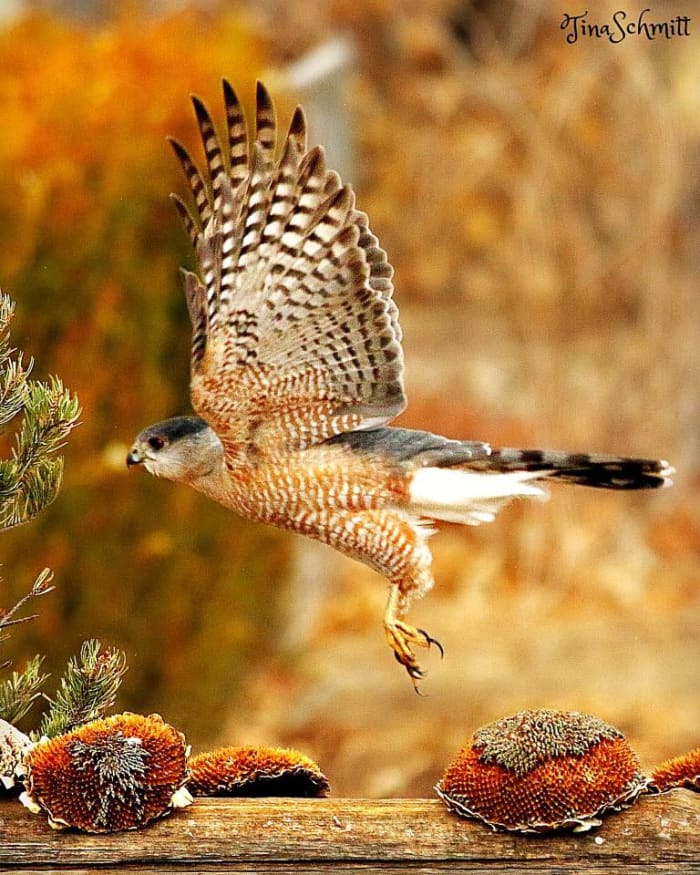Among the remarkable birds of prey in North America, the Cooper’s Hawk stands out not only for its predatory prowess but also for its striking appearance and intriguing behaviors. Despite being a handsome bird, the Cooper’s Hawk plays a vital role in maintaining ecological balance. From its distinctive features to its conservation challenges, this hawk offers a captivating glimpse into the natural world.

The Cooper’s Hawk belongs to the accipiters group, distinguished by long tails and rounded wings that enable them to navigate dense vegetation with remarkable agility. Indigenous to North America, these hawks are found from Southern Canada to Northern Mexico. They exhibit sexual dimorphism, with females being larger than males.
Recognizable by its red eyes and gray chest speckled with reddish-brown spots, the Cooper’s Hawk displays a barred gray and black tail with a distinctive white tip. Their forward-facing eyes enhance depth perception during high-speed hunting, while their hooked beak aids in tearing prey. Their hunting technique includes a flap-flap-glide flight pattern, allowing them to efficiently maneuver through wooded areas in pursuit of prey.
Distinguishing Cooper’s Hawks from other species, such as the Sharp-Shinned Hawk, can be challenging due to their similar appearances. However, Cooper’s Hawks have larger heads, darker gray caps, and wider white tail tips during the fall migration. Their ability to capture larger prey sets them apart from their counterparts.

The Cooper’s Hawk, with its agile flight, keen eyesight, and strategic hunting techniques, exemplifies the marvels of nature’s intricate balance. As they navigate challenges posed by urbanization and environmental changes, understanding and conserving these avian predators becomes crucial. Through awareness, protection of habitats, and mitigation of threats, we can ensure the continued presence of the crafty Cooper’s Hawk, enriching our ecosystems and our appreciation for the natural world.





